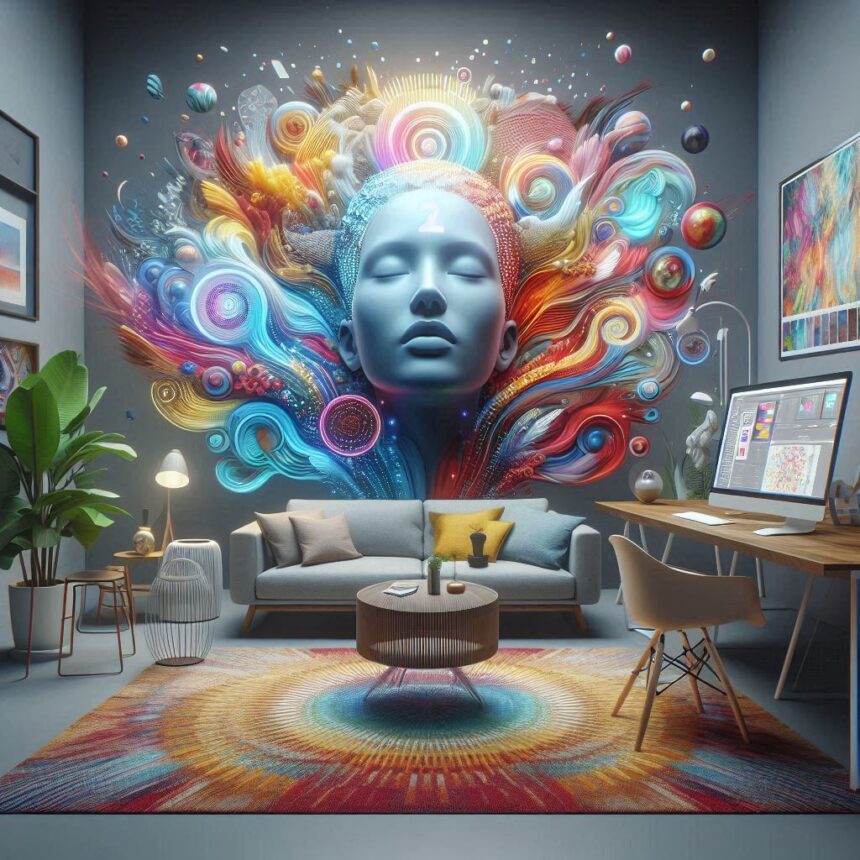At Adobe Max London 2025, the creative software giant has once again proven that the future of design lies in artificial intelligence. In a keynote that left attendees inspired and awed, Adobe introduced a new wave of AI-powered tools designed to redefine workflows across its Creative Cloud suite. These innovations are poised to empower designers, marketers, content creators, and teams worldwide with unprecedented speed, realism, and creative potential.
From hyper-realistic generative imaging to collaborative AI moodboarding and natural language photo editing, Adobe’s announcements signal a bold new direction: AI as an intuitive, ethical, and imaginative creative partner.
Firefly Image Model 4: The Apex of Photorealistic AI
The star of the show was the unveiling of Firefly Image Model 4, Adobe’s most powerful generative image model to date. With dramatically improved photorealism, context understanding, and detail rendering, Firefly 4 makes image generation suitable for professional design use.
Key Enhancements:
- Photographic-grade realism: Detailed skin textures, accurate lighting, and depth
- Contextual prompt understanding: Better interpretation of nuanced creative inputs
- Real-time interactivity: Brush-based edits influence live outputs
- Seamless integration with Photoshop and Illustrator
Firefly 4 marks Adobe’s intent to compete directly with leading image generation tools like Midjourney and DALL·E, while maintaining its commitment to ethical content sourcing—using only Adobe Stock and licensed datasets.
Firefly Boards: Redefining Creative Collaboration
With remote teams becoming the norm, Adobe introduces Firefly Boards, a collaborative AI-powered moodboarding and ideation tool.
Features and Capabilities:
- Real-time co-creation with team members
- Automatic layout suggestions
- Visual theme recommendations based on brand or project tone
- Drag-and-drop support for images, sketches, video, and text
Firefly Boards allows creative teams to brainstorm with AI as a participant—suggesting ideas, composing visuals, and organizing concepts.
Who Benefits:
- Creative agencies building client pitch decks
- UX/UI designers iterating on early prototypes
- Marketing teams shaping campaign themes
Photoshop Gets Conversational: Natural Language Editing
In a groundbreaking move, Adobe has added natural language processing (NLP) to Photoshop, allowing users to make edits by simply typing or speaking instructions.
Example Commands:
- “Make the sky sunset orange and add light rays”
- “Blur the background slightly and enhance the subject’s face”
- “Crop to 4:5 and sharpen the entire image”
This feature lowers the barrier for non-designers and dramatically speeds up pro workflows, making Adobe’s flagship app more inclusive and intuitive.
Smarter Lightroom: AI-Powered Landscape Masking
For photography professionals, Adobe added intelligent landscape masking to Lightroom, enhancing:
- Auto-detection of skies, trees, water, and terrain
- Region-specific adjustments with one click
- AI depth mapping for accurate tonal control
This is a huge win for photographers who previously spent hours masking elements manually.
Adobe Express Evolves: Quick Content Powered by AI
Adobe Express, the brand’s tool for fast, professional-looking content creation, now includes:
- AI-suggested templates based on industry or goal
- Automatic video trimming and captioning
- Real-time brand compliance checks
This streamlines content production for social media managers, SMBs, and educators who need to create high-impact visuals without deep design knowledge.
Creative Cloud Copilot: Your AI Design Partner
Adobe’s Creative Cloud Copilot is now smarter, available across Photoshop, Illustrator, Premiere Pro, and InDesign.
What It Does:
- Answers design-related questions (“What font works with this?”, “What’s a better color for contrast?”)
- Flags brand inconsistencies
- Offers smart layout improvements
- Suggests plugins and tools based on project context
Copilot enhances user experience by offering real-time, non-intrusive, context-aware suggestions.
Firefly and Ethics: A Responsible Approach
Adobe reiterated its stance on responsible AI:
- All generative tools are trained only on licensed, royalty-free, or Adobe Stock content
- All AI-generated assets are embedded with Content Credentials, disclosing creation origins
- Artists can opt in or out of data training via Adobe Stock
This ethical AI strategy positions Adobe as a trustworthy platform amidst global concerns about misinformation and misuse of generative technology.
Stats from Adobe Max London 2025
- Attendance: Over 20,000 creatives, developers, and educators
- Keynote Speakers: Executives from Adobe, BBC Studios, Nike, and National Geographic
- Workshops: 120+ sessions on AI, creativity, and productivity
- Demos: Live showcases of Firefly-powered image generation
Adobe also announced that these new tools will roll out globally through Creative Cloud subscriptions starting in Q3 2025.
Final Thoughts: A Creative Leap, Ethically Anchored
By integrating AI deeply—but responsibly—into the creative process, Adobe introduces AI features that balance innovation with integrity. The rollout of Firefly Image Model 4, Firefly Boards, and natural language editing tools shows Adobe’s vision for AI not as a replacement for human designers—but as a partner in idea realization.
In a world navigating AI’s potential threats—be it to privacy, justice, or information integrity—Adobe’s ethical and creative-first approach provides a blueprint for building tools that inspire, not endanger.
Real Related Articles:
For more insights into how AI is transforming industries, check out these related articles:
The Bot Company’s $2 Billion Leap: Inside the Boom of Robotics Startup Funding
How Artificial Intelligence Will Naturally Affect Patentability
AI Can Identify Chemicals from Photos: A New Era in Accessible Chemical Analysis
Explainable Artificial Intelligence (XAI): Making AI Transparent, Trustworthy, and Accountable
